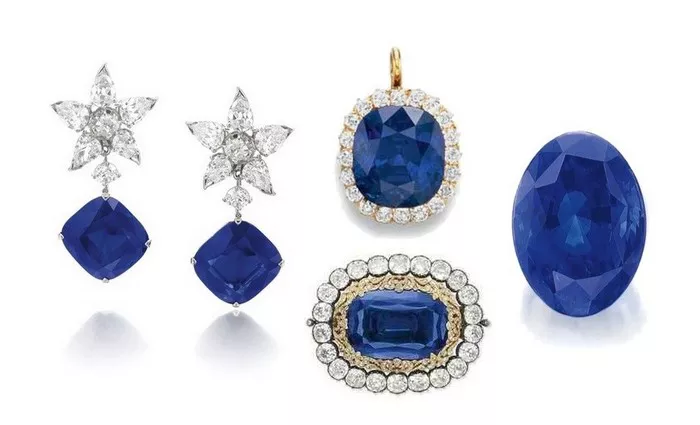The realm of gemstone appraisal is a complex and fascinating field, where the interplay of natural beauty, scientific precision, and human perception creates a rich tapestry of value. Among the myriad gemstones that capture the imagination, yellow sapphires hold a special place, particularly those sourced from the Cassiat mines. This article aims to provide a detailed and accessible overview of the color grading standard for Cassiat yellow sapphires, drawing on insights from the jewelry appraisal industry. By understanding these standards, consumers and collectors can better appreciate the nuances that determine the value of these precious gems.
Understanding Cassiat Yellow Sapphire
Yellow sapphires are a type of corundum, the mineral that also forms blue sapphires and rubies. The yellow coloration in sapphires is primarily caused by trace elements like iron and titanium, which interact with the crystal structure to produce a range of hues from pale yellow to deep golden tones. Cassiat, a hypothetical locality used for illustrative purposes in this article, is known for producing sapphires with a distinctive yellow hue, often described as warm, inviting, and rich.
Color Grading Standards
The color grading of gemstones, including Cassiat yellow sapphires, is a rigorous process that involves assessing multiple factors to determine the overall quality and value of the gem. These factors are typically categorized into four main areas: hue, saturation, tone, and distribution.
Hue
Hue refers to the basic color of the gemstone, ranging from pure yellow to those with secondary tones like greenish-yellow or orange-yellow. In the case of Cassiat yellow sapphires, the ideal hue is often described as a warm, golden yellow with minimal secondary tones. A pure yellow hue is highly valued, as it is perceived as more vibrant and desirable.
Saturation
Saturation, or chroma, refers to the intensity or purity of the color. In yellow sapphires, saturation is measured by how vivid the yellow color appears. A highly saturated yellow sapphire will have a strong, intense color that is easily recognizable. Conversely, a low-saturation yellow sapphire may appear washed out or pale. The saturation of a Cassiat yellow sapphire plays a crucial role in determining its value, as gems with more intense color are generally more sought after.
Tone
Tone refers to the lightness or darkness of the color, often described as the gemstone’s brightness or depth. In yellow sapphires, tone can vary from very light, almost white, to very dark, almost brown. The ideal tone for a Cassiat yellow sapphire is one that balances the color’s vibrancy with a pleasant visual appearance. A gem with too light a tone may lack depth, while one with too dark a tone may appear dull or muted.
Distribution
Distribution refers to the uniformity and evenness of the color within the gemstone. In yellow sapphires, this is particularly important, as color zoning or patches of different shades can detract from the overall appearance. A well-distributed color will appear consistent throughout the gem, enhancing its beauty and value. Cassiat yellow sapphires with even, consistent color distribution are highly valued, as they offer a more uniform and appealing visual experience.
Additional Factors Influencing Color Grading
In addition to hue, saturation, tone, and distribution, several other factors can influence the color grading of Cassiat yellow sapphires. These include the gemstone’s clarity, cut, and size.
Clarity
Clarity refers to the internal and external characteristics of the gemstone that affect its transparency and appearance. Inclusions, such as cracks, minerals, or gas bubbles, can impact the clarity of a yellow sapphire. Gemstones with fewer and smaller inclusions are generally more valuable, as they appear cleaner and more transparent. Clarity also affects the perception of color, as inclusions can scatter light and reduce the gem’s overall brilliance.
Cut
The cut of a gemstone refers to the shape, proportions, and facets that have been crafted to enhance its beauty and value. In yellow sapphires, the cut plays a crucial role in maximizing the gem’s color and brilliance. A well-cut gemstone will have proportions that optimize light reflection and refraction, creating a more vivid and sparkling appearance. The choice of cut can also impact the gemstone’s perceived color, as certain cuts can emphasize or minimize certain hues.
Size
The size of a gemstone is another important factor in determining its value. Larger gemstones are generally more rare and difficult to find, making them more valuable. However, size alone is not enough to determine a gemstone’s worth; it must be balanced with other factors such as color, clarity, and cut. A large gemstone with poor color or clarity will not be as valuable as a smaller gem with exceptional quality.
Conclusion
The color grading standard for Cassiat yellow sapphires is a comprehensive and rigorous process that involves assessing multiple factors to determine the gem’s overall quality and value. By understanding these standards, consumers and collectors can better appreciate the nuances that differentiate one gemstone from another. Whether you are a seasoned collector or a novice enthusiast, the journey of exploring and understanding the world of gemstones is both rewarding and enlightening. As you continue to explore the realm of Cassiat yellow sapphires, keep in mind the importance of hue, saturation, tone, distribution, clarity, cut, and size in determining their true worth.
Related topic:
- How to Identify the Authenticity of Bright Yellow Sapphire?
- Why Is Bright Yellow Sapphire Rare?
- How to Identify Ceylon Yellow Sapphire?


